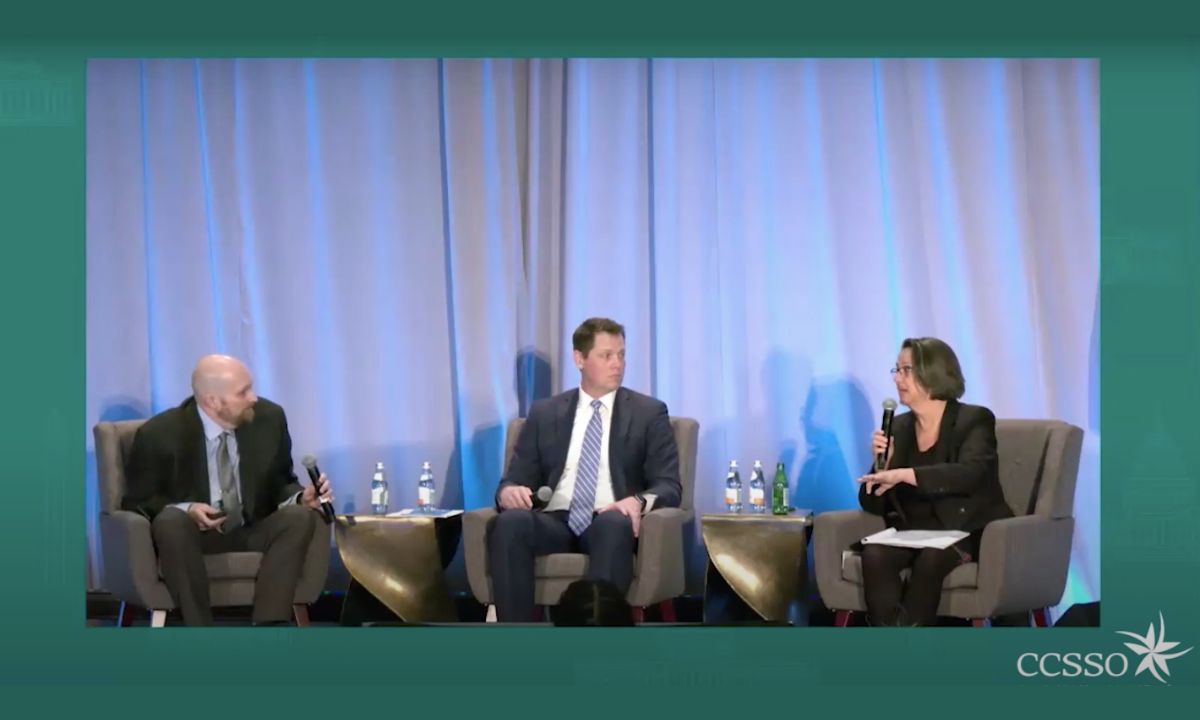Video: With COVID Funds Ending, How Can Schools Keep Their Best Programs Going?
CCSSO brought together a dozen education experts to discuss how to identify, sustain the most successful recovery efforts as they tighten their belts.

Get stories like this delivered straight to your inbox. Sign up for The 74 Newsletter
Over the last four years, an unprecedented $190 billion in federal COVID recovery funds has allowed state and local education officials to try a dizzying array of strategies to meet students’ and educators’ needs. Now, with the deadline for spending the last of that money looming, school systems face tough decisions about which efforts merit continued investment.
The Council of Chief State School Officers recently brought together representatives of a dozen major education organizations, state departments and local districts to share stories about their most successful efforts and how they plan to maintain the programs that yielded the best outcomes as budgets tighten. The 74’s Beth Hawkins moderated one of the sessions, which showcased one district’s decision to collect data on what was working.
Organizers have released videos of the panels, focusing on innovative efforts at the state, district and school levels. In one, North Carolina officials talk about their decision to create an office of learning recovery within the state Department of Public Instruction, which will conduct research to help legislators make data-informed decisions about K-12 policy. The state also built a “funding cliff dashboard” for school systems to use as they confront the end of the federal aid.
Attendees also heard from a Georgia middle school principal who slashed student office referrals to one third of pre-pandemic rates by gathering detailed, personal information on young people’s well-being and changing expectations for how staff spend their time. Teachers and administrators now join students for an extended lunch period, for example, and school leaders frequently ask students about everything from stress to thoughts of suicide, instead of relying on teacher referrals to support staff.
On Hawkins’s panel, Adam Kunz, assistant superintendent of St. Paul Public Schools, and Indianapolis Public Schools Deputy Superintendent Andrew Strope delved into how their districts forged ahead with “right-sizing” efforts despite an infusion of cash that they could have used to forestall painful decisions. Instead, both school systems spent their federal funds on the recovery efforts that showed the strongest returns on investment.
In addition to fixing longstanding inequities in how special education and gifted and talented services are provided, Indianapolis invested in a high-dosage tutoring effort credited with reducing lost ground in math and reading to a third of losses in similar districts.
St. Paul’s presentation described the district’s decision to plan for the end of federal funding even before the money arrived and showcased a novel high school credit recovery effort that has yielded major gains in student engagement and graduation readiness.
Here are videos of the other sessions on the program:
North Carolina Superintendent of Public Instruction Catherine Truitt and state Sen. Michael Lee talk with CCSSO CEO Carissa Moffat Miller about their state’s creation of a research hub to collect data on effective recovery efforts that lawmakers can tap when deciding education policy priorities.
Georgia Association of Secondary School Principals’ 2023 Middle School Principal of the Year Suzan Harris and eighth-grader Carter Glover describe dramatic improvements in their Jackson school’s disciplinary climate and ability to support student mental health.
CCSSO’s 2023 National Teacher of the Year Rebecka Peterson talks to educator Jo-Anne Smith of Waterbury, Vermont, about her role as a kindergarten intervention specialist at Brookside Primary School.
Roberto Rodriguez, assistant secretary for planning, evaluation and policy development with the U.S. Department of Education, talks with Council of the Great City Schools Executive Director Ray Hart about opportunities to continue the most effective ESSER investments.
Get stories like these delivered straight to your inbox. Sign up for The 74 Newsletter

;)